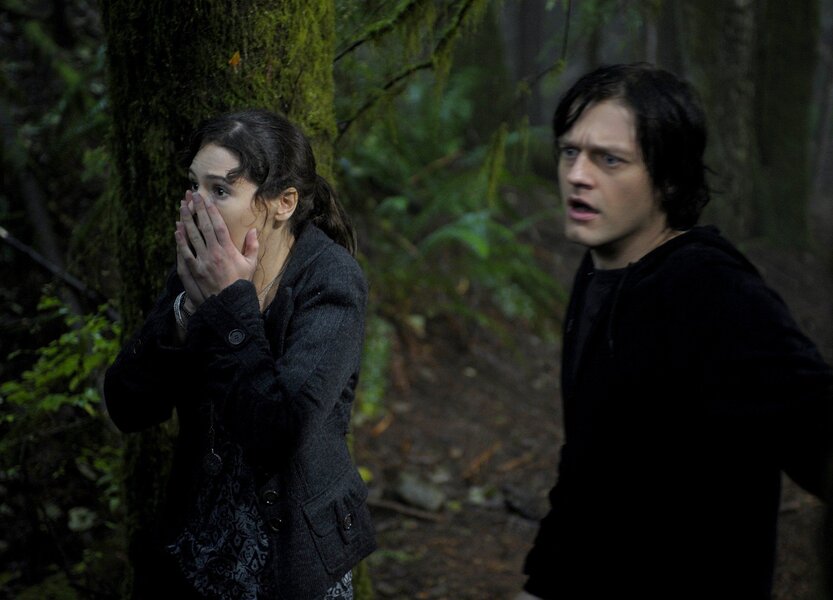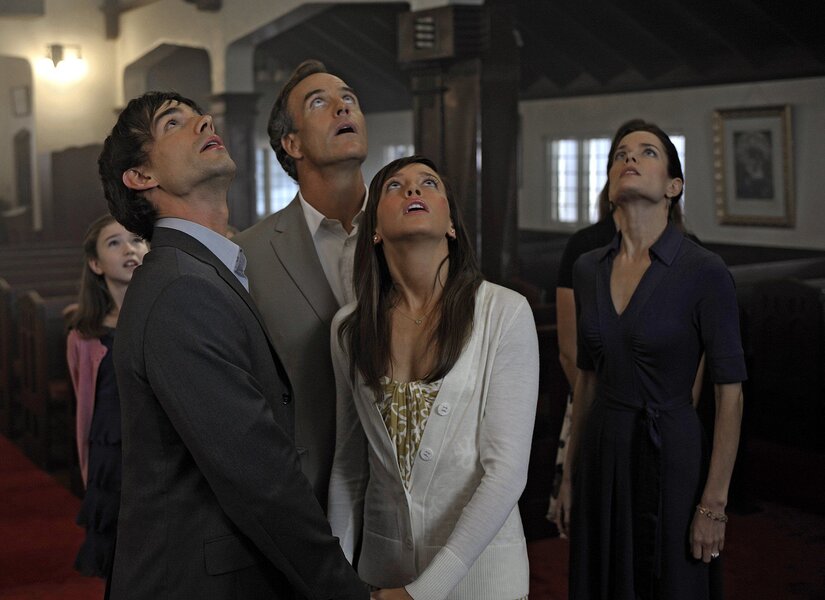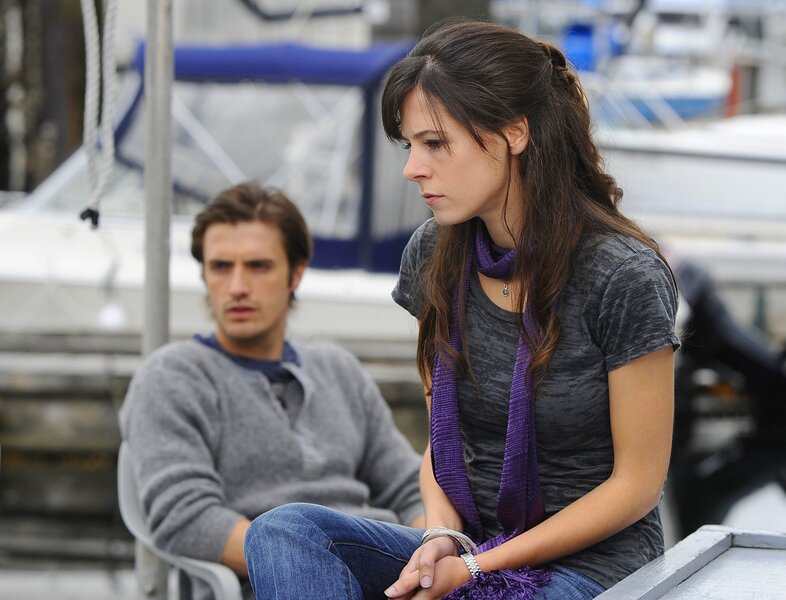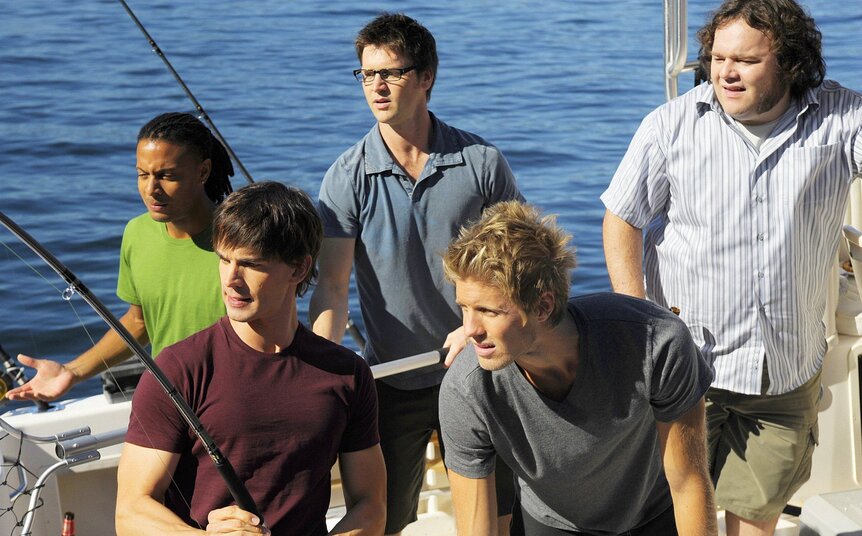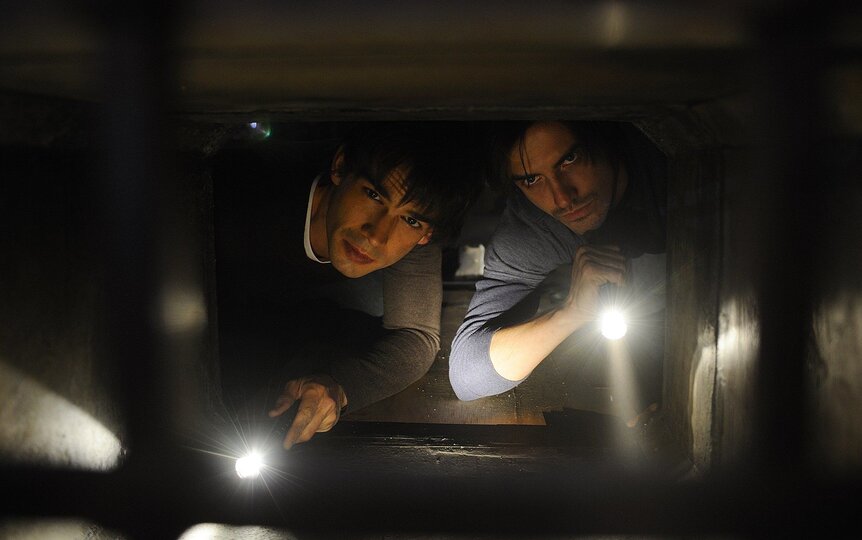Create a free profile to get unlimited access to exclusive videos, sweepstakes, and more!
Revisiting Harper's Island, 10 years on
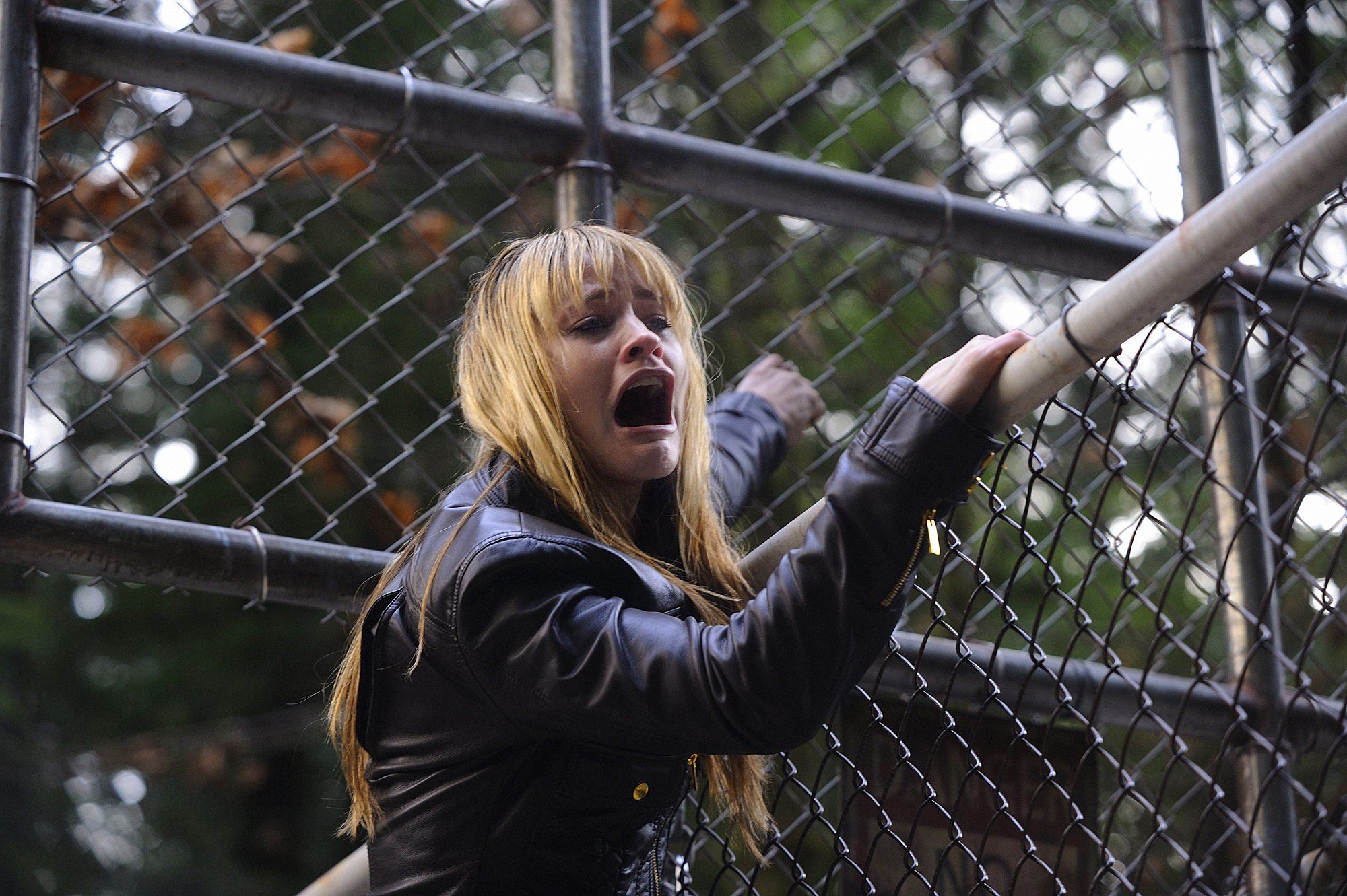
When CBS launched Harper’s Island ten years ago, the horror anthology series was a relic of the past. Today, in 2019, this format has never been more popular: American Horror Story is about to enter its ninth season, The Terror is returning for a second season, and Mike Flannigan's Haunting series is taking Netflix by storm — not to mention Into the Dark, Castle Rock, and Jordan Peele’s Twilight Zone reboot. In the age of Peak TV, it's a highly appealing format, as big-name actors can sign on without having to make a long-term commitment, but there is also the option to return as a different character in a later iteration.
The horror anthology has been a staple going back to TV’s earliest days, including the legendary Alfred Hitchcock Presents and Rod Serling’s original Twilight Zone. Some of these contemporary offerings follow a similar format, telling a self-contained story within each episode, whereas others stick to one overarching narrative per season before switching it up.
The plan for the 13-part CBS slasher-style series Harper's Island was to turn it into an anthology event, but only if the ratings were a smash. As I am sure you can deduce, this did not happen. In April 2009, the first episode premiered to just over 10 million viewers, and it was moved from its Thursday night slot three weeks after it debuted to Sundays. The ratings quickly sunk, averaging 4.8 million across the season. In the lead up to its debut, executive producer John Turteltaub told The New York Times that if it was successful the narrative would expand: “Maybe there’s ‘Harper’s Safari,’ where people have crash-landed in the jungle, or one where there is a boat that is lost at sea.” This did not come to pass. Instead, it now exists as a one-off ideal for binging. Harper's Island would likely draw more viewers if it aired now; however, streaming services offer the chance for viewers to rewatch or even enjoy for the first time (it is currently available to stream on Amazon Prime).
Combining elements of soap and romance within the horror structure, Harper’s Island is ideal summer viewing. Don’t worry, we won’t be spoiling who did it or who dies; instead, here is a look back at what turned out to be a failed experiment by CBS and how it stands within the annals of TV horror.
Harper’s Island is the "destination" of this particular wedding celebration. It should be the happiest day of Trish (Katie Cassidy) and Henry's (Christopher Gorham) lives, but events quickly descend into a nightmare. The relatively secluded Pacific Northwest location has a well-known bloody history, as six people were murdered and then displayed in gruesome fashion seven years prior. Maybe the scene of a horrific crime isn’t the best place to celebrate upcoming nuptials.With a cast of 25 possible suspects (and victims), Harper’s Island stretches the 90-minute slasher horror to 13 episodes, killing off at least one character per episode. In a post-Scream world, there is something rather quaint about this setup, but it doesn’t reference scary movie after scary movie. It both leans into horror movie tropes and (occasionally) subverts them.
At the heart of this story is Abby Mills (Elaine Cassidy), a young woman returning home for the first time since notorious killer John Wakefield murdered six people (including her mother). Abby has a lot of emotional baggage in her carry-on as a result of her swift departure from the island, including facing her ex-boyfriend Jimmy (C.J. Thomason) and attempting to reconnect with her estranged father (who is also the sheriff) after he forced her to leave. But when she's asked to participate in Trish and Henry's wedding, she can't skip out on this homecoming.
The cast is full of recognizable faces including Harry Hamlin, Matt Barr, and Katie Cassidy. Of course, everyone is ridiculously good looking and while this aired on CBS, it feels a lot more resemblant of the CW in tone. There are hot hook-ups before (and during) the murder spree; sometimes death makes people horny, ya know? And maybe it would have been better suited on the CW originally, particularly as there was a whole interactive online element. One aspect of this was having the chance to win $1000 if you could guess the next victim, which is kinda dark when you think about it. 2009 was a weird time in the relationship between television and the internet as social media was still relatively new compared to the landscape today.
Scandal and Pretty Little Liars thrived in part because of live-tweeting, a concept that wouldn't happen for a few more years. Harper’s Island would have benefited from this type of interaction, further proof that this horror series both feels ahead of its time and represents a relic of the way TV once was.
CBS also produced the web series Harper's Globe, centering around the local newspaper, as an attempt to boost the online community, which they debuted the mouth before the premiere and which featured some of the characters from the show. Imagine the potential if this debuted now! Websites would be replaced by Instagram profiles and Pinterest boards featuring ideas for Trish's wedding.
By stating this is a one-off story — with the option to expand the concept — the intention was to engage viewers who worried there might not be any resolution. It was a quick fling for summer rather than a series that would drag on for years. This also meant that pretty much all the characters were expendable, even those recognizable faces. Abby falls into the Final Girl bracket, but this doesn’t mean she is necessarily safe and with each gruesome death it feels like anyone could be next. The influence of the Saw franchise is apparent as the scenarios in which the victims meet their end are somewhat complicated in execution. This is also a good reminder of how far even network TV can go when depicting acts of violence on screen.
Granted, Harper's Island is far from perfect. At 13 episodes, it is still too long to sustain the story. It suffers from the mid-season sag most commonly associated with a lot of Netflix original series long before streaming entered our collective consciousness. There are plenty of twists, but at times it gets rather repetitive.
As Turteltaub told The New York Times, “If the show’s a flop we have to go away. If the show’s a success, there will be another 13-week episode. CBS is ready to pull the trigger if it’s a hit.” Of course, the latter did not happen, because it was just too early for this particular kind of show, which today would be considered an ideal weekend-long binge. Now, in a TV world that features Bandersnatch and countless horror anthologies, it is time to make a return trip to Harper’s Island.
The views and opinions expressed in this article are the author's, and do not necessarily reflect those of SYFY WIRE, SYFY, or NBC Universal.
